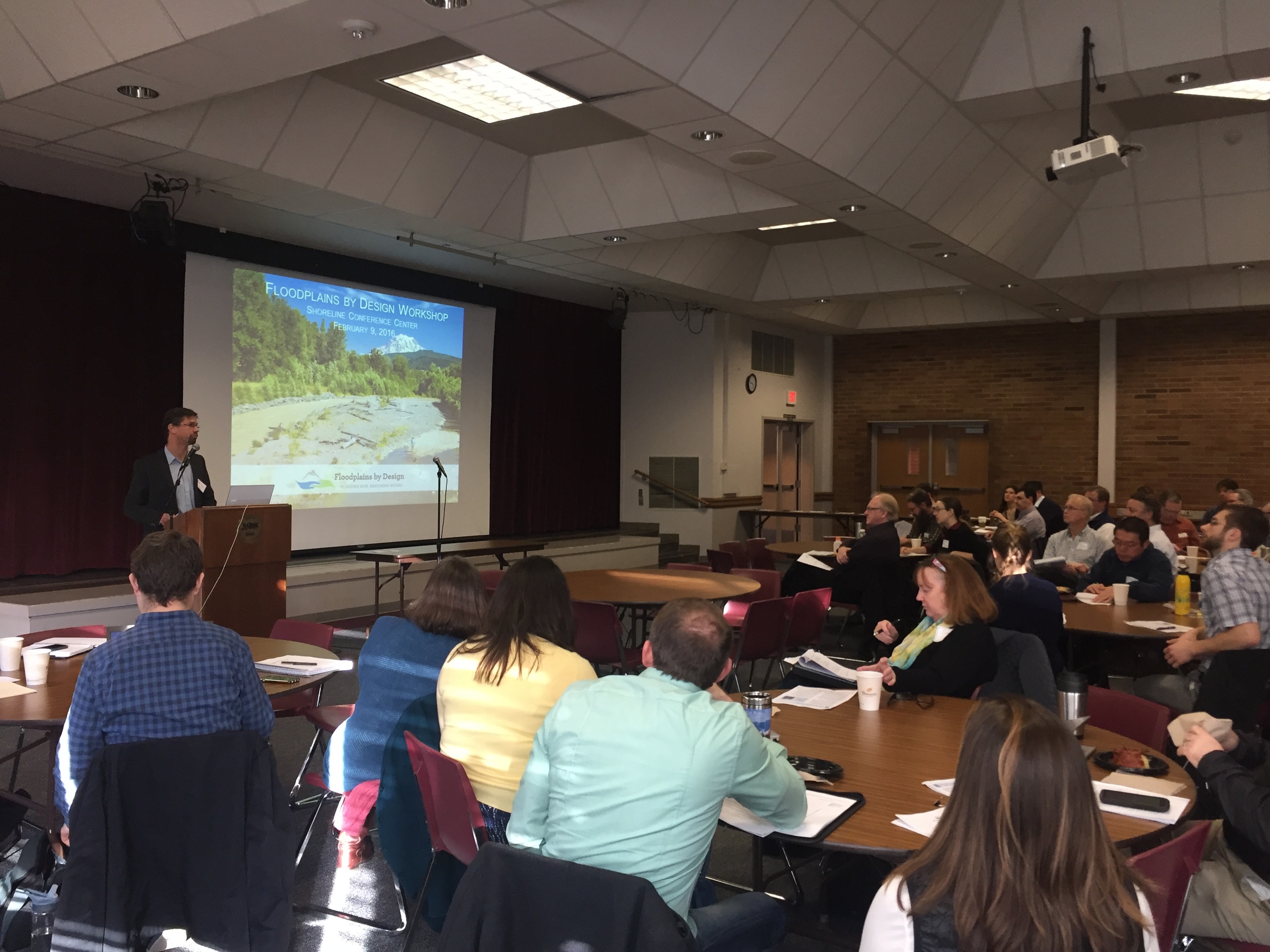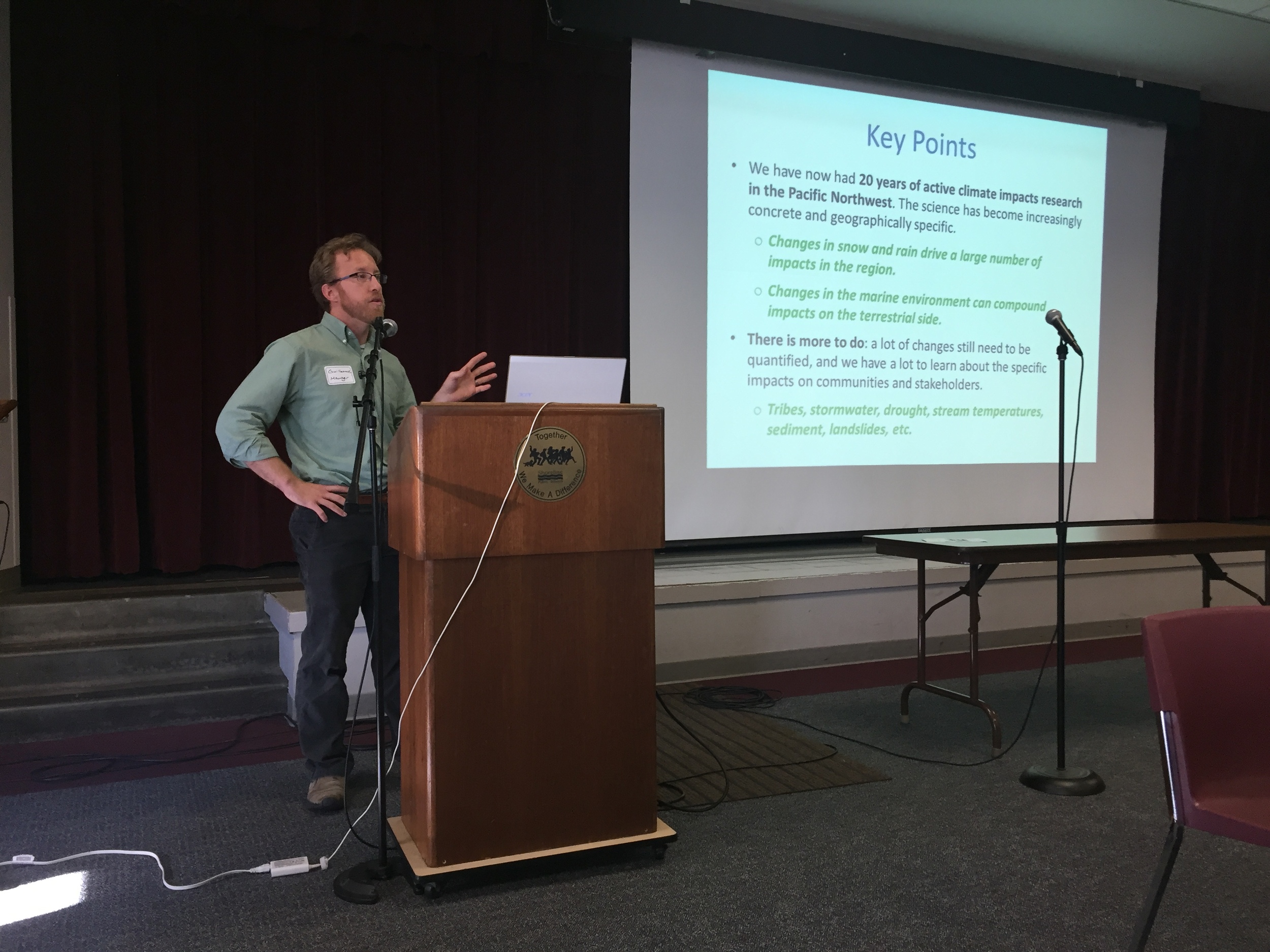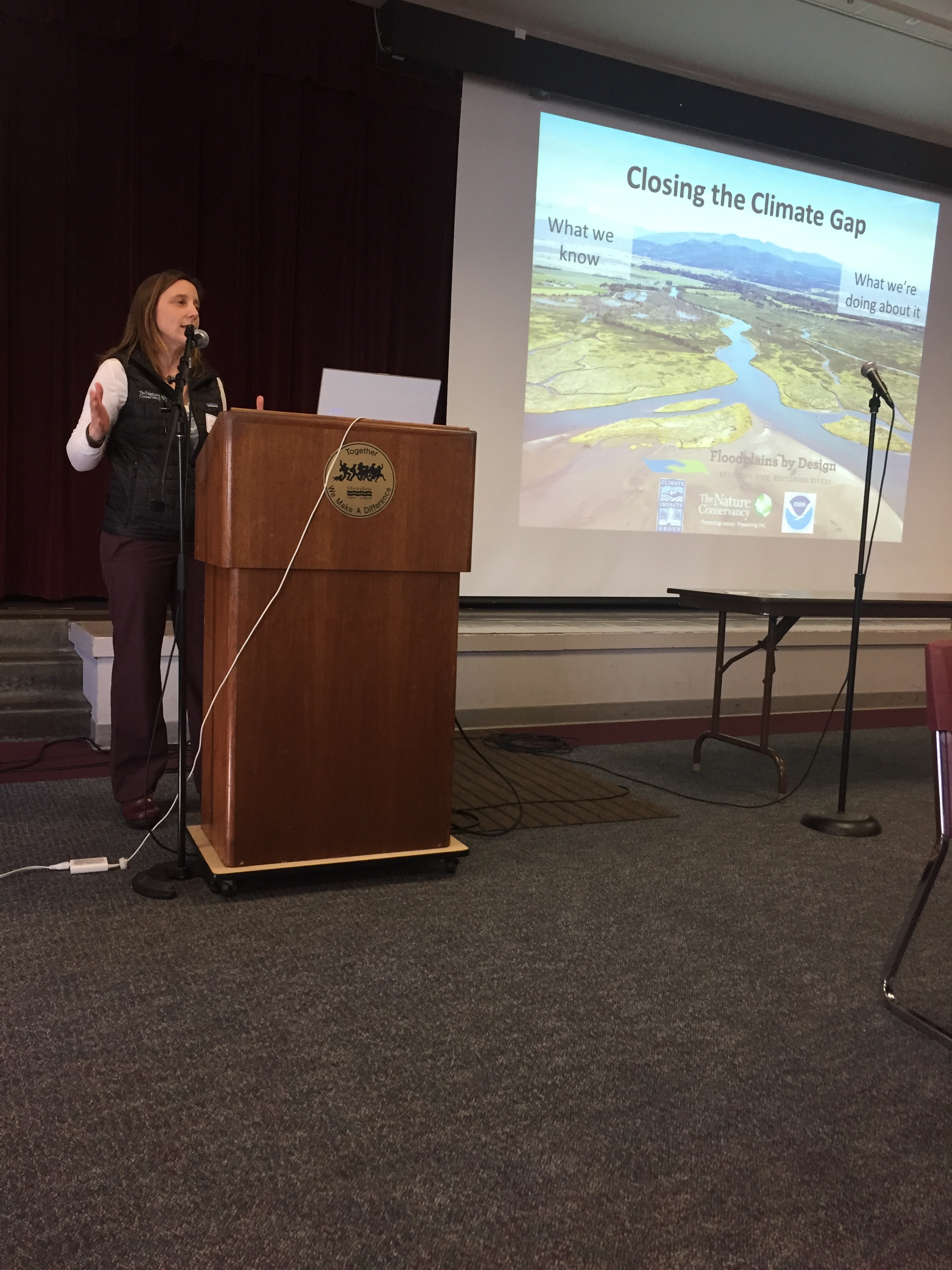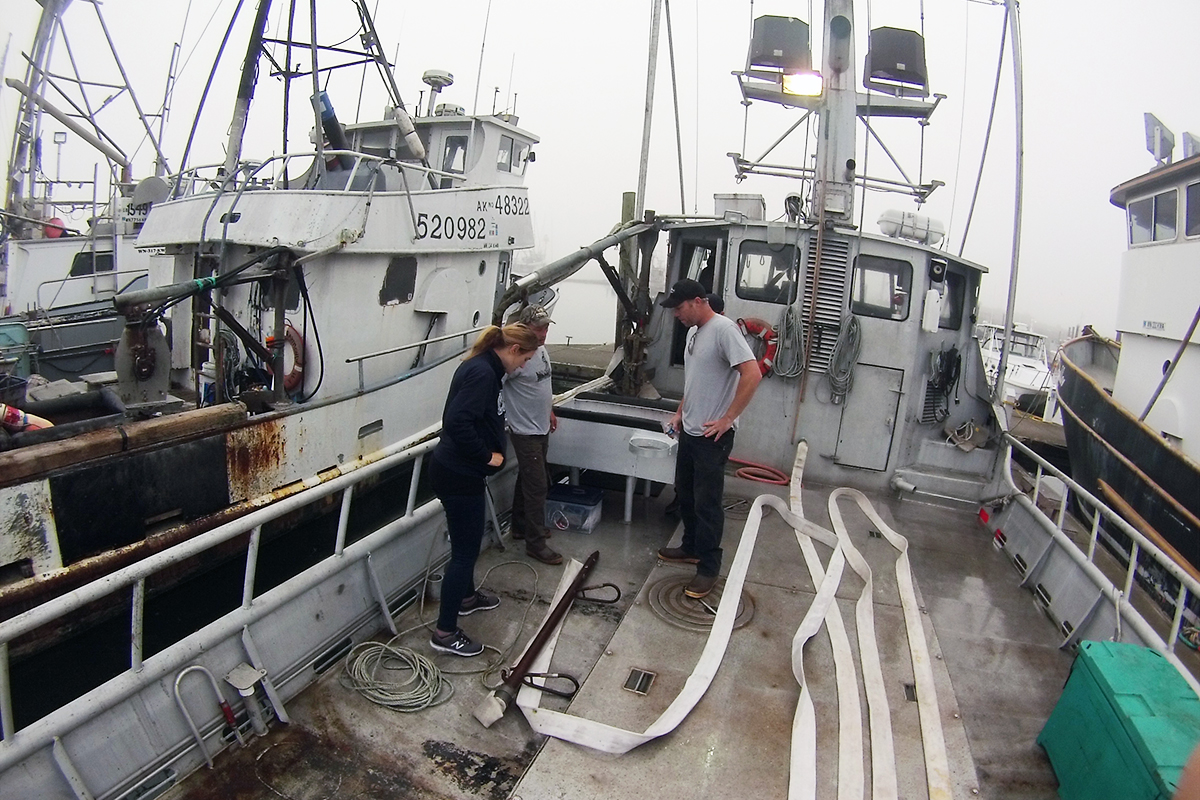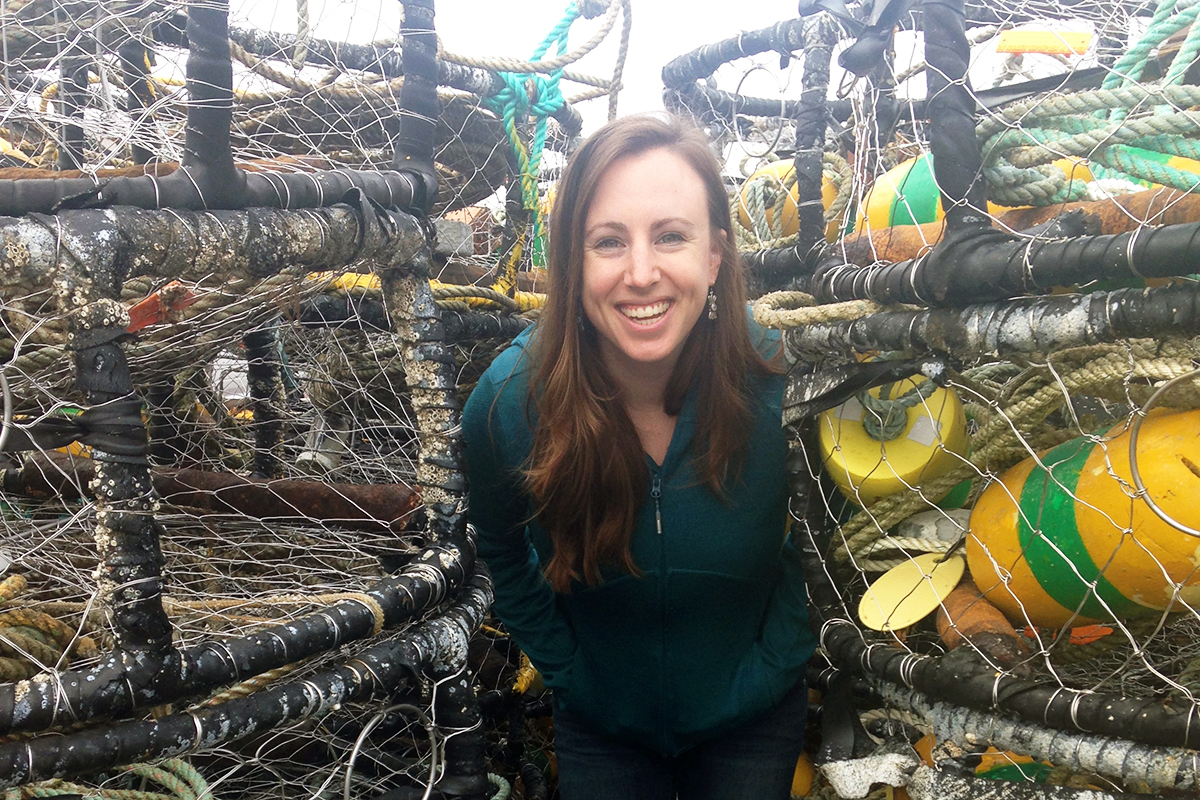Abandoned fishing gear never stops fishing.
Written and Photographed by Molly Bogeberg, Hershman Marine Policy Fellow and Kara Cardinal, Marine Projects Manager
Kara Cardinal and I woke up early to walk the docks in Westport and catch Quinault Indian Nation fisherman (Tony) and Natural Resource Consultants (NRC) staff (Jeff Cox) before they left Westport in search of lost and abandoned crab pots to pluck from the seafloor. The Nature Conservancy has partnered with the Quinault, NRC, and NOAA to use a specially designed line cutter and hydraulic pump to remove crab pots that have been buried deep in the sand or caught in-between rocks.
Jeff demonstrated how the specially designed crab pot line cutters work. It was amazing to see how the white tubing pumps water into the sandy seafloor to help remove buried crab pots. These derelict crab pots are a menace because they can continue to catch crab, impede other fishing practices, and entangle marine mammals. The hope is that by removing these lost pots, the waters close to Westport and the Quinault Nation will be safer for boaters and marine organisms alike.
Learn more about our marine work here.







